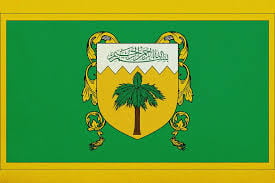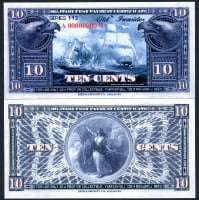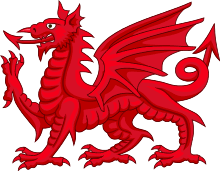This nation is in Vacation Mode for the next 2,837 turns. This nation cannot be attacked or traded with during that time.
| National Factbook |
| Flag: |

|
| Nation Name: |
United Governorates of Asia |
| Leader Name: |
Sione |
| Currency: |

Morceaux |
| National Animal: |

Zaldrīze |
| History: |
The United Governorates of Middle Asia (UGMA) emerged from a tumultuous period of regional conflicts and colonial rule in the early 20th century. Before its formation, the region was a patchwork of territories under various colonial powers and local rulers. As the colonial empires began to wane after World War I, nationalist movements gained momentum across the region. In the 1920s, inspired by the principles of self-determination and national sovereignty, leaders from several Middle Asian territories convened to discuss the possibility of unification. After years of negotiations, compromises, and sometimes violent struggles against colonial forces, the United Governorates of Middle Asia was officially established 1931 through a series of treaties and agreements. Significant challenges, including internal dissent, economic instability, and external pressures from neighboring powers marked the early years of UGMA. However, under the leadership of visionary statesmen and with support from the populace, the new nation began to stabilize and consolidate its authority. Efforts were made to modernize infrastructure, develop industries, and establish institutions of governance. Education and healthcare were prioritized to improve the quality of life for citizens across the diverse territories comprising UGMA. Additionally, a sense of national identity began to take root, transcending ethnic, linguistic, and religious differences. By the mid-20th century, the United Governorates of Middle Asia experienced a period of relative prosperity and cultural flourishing. Investments in education and technology-fueled innovation and economic growth. The nation became known for its vibrant arts scene, scientific achievements, and contributions to global culture. UGMA played an active role in international affairs, advocating for decolonization, human rights, and global cooperation. Diplomatic relations were established with countries around the world, and UGMA became a hub for trade and cultural exchange in the region. Despite its achievements, UGMA faced numerous challenges in the latter half of the 20th century and into the 21st century. Political tensions, economic downturns, and regional conflicts tested the resilience of the nation. However, UGMA's commitment to democracy, pluralism, and social justice helped it weather these storms. Efforts to address inequality, promote social cohesion, and protect the environment were redoubled. Investments in renewable energy, sustainable agriculture, and disaster preparedness were made to mitigate the impact of climate change and ensure the well-being of future generations. In the present day, the United Governorates of Middle Asia stands as a beacon of stability, prosperity, and progress in the region. While challenges persist, the nation remains resilient and adaptable, drawing strength from its rich cultural heritage and diverse population. UGMA continues to play an active role in global affairs, advocating for peace, justice, and sustainable development. Through diplomacy, trade, and international cooperation, the nation strives to build a better future for all its citizens and contribute to the well-being of humanity as a whole. |
| Geography |
| Continent: |
Asia |
| Land Area: |
21,243.29 sq. km |
| Terrain: |
Major rivers such as the Amu Darya and Syr Darya flow through Middle Asia, providing vital water resources for agriculture and human settlement. The valleys surrounding these rivers are often fertile and densely populated, supporting a variety of crops and ecosystems. Middle Asia has several notable lakes, including the Aral Sea Lake Balkhash, and Issyk-Kul. These bodies of water play important roles in the local ecology and economy, supporting fisheries, tourism, and transportation. Middle Asia's lush forests are primarily found in mountainous regions, particularly along the slopes of the Tian Shan, Pamir, and Altai Mountain ranges. These forests are often situated at higher elevations with higher precipitation levels and temperatures are cooler, creating ideal conditions for lush vegetation to thrive. Middle Asia's lush forests are home to a diverse array of plant species, including deciduous and coniferous trees, shrubs, and flowering plants. Common tree species in these forests include oak, pine, spruce, fir, cedar, and birch. The forest floor is often carpeted with ferns, mosses, and wildflowers, creating a vibrant undergrowth. The forests of Middle Asia support a rich variety of wildlife, including mammals, birds, reptiles, and insects. Species such as deer, bears, wolves, lynx, and wild boar inhabit these forests, along with numerous smaller mammals like squirrels, foxes, and martens. Birds of prey, such as eagles and hawks, soar overhead, while reptiles like snakes and lizards find shelter among the foliage. Middle Asia's lush forests provide essential ecosystem services that benefit both humans and wildlife. These forests help regulate local climates, mitigate soil erosion, and maintain water quality by filtering pollutants and regulating stream flow. They also serve as carbon sinks, helping to mitigate climate change by absorbing and storing carbon dioxide from the atmosphere. Overall, the lush forests of Middle Asia are a precious and valuable natural resource, contributing to the region's ecological health, biodiversity, and cultural heritage. Efforts to conserve and sustainably manage these forests are essential to ensure their continued health and vitality for future generations. |
| Highest Peak: |
Mt. Kangchenjunga,
8,000 meters
|
| Lowest Valley: |
Suru Valley,
2,000 meters
|
| Climate: |
In the higher elevations of Middle Asia, particularly in the foothills and slopes of mountain ranges such as the Tian Shan, Pamir, and Altai, a temperate forest climate prevails. Summers are generally mild to warm, with temperatures averaging between 15°C to 25°C (59°F to 77°F). Winters are cold, with temperatures often dropping below freezing, but not as harsh as in the adjacent steppe or desert regions. Precipitation is relatively abundant throughout the year, with snowfall common in the winter months. This climate supports the growth of lush temperate forests dominated by deciduous and coniferous trees. In some lower-elevation areas with more favorable moisture conditions, particularly along river valleys and in sheltered locations, a subtropical forest climate may exist. Summers are warm to hot, with temperatures ranging from 25°C to 35°C (77°F to 95°F), while winters are mild, with temperatures rarely dropping below freezing. Precipitation is higher than in the surrounding steppe or desert regions, with rainfall occurring throughout the year, although there may be a distinct wet season. These areas support diverse subtropical and broadleaf forests, with a rich variety of plant and animal species. At higher elevations within the mountain ranges of Middle Asia, a montane forest climate prevails. Summers are cool and moist, with temperatures typically ranging from 10°C to 20°C (50°F to 68°F). Winters are cold, with temperatures often dipping below freezing and snowfall common. Precipitation levels are high, with significant snow accumulation during the winter months. Montane forests in these areas are characterized by a mix of coniferous and broadleaf trees adapted to the cooler and wetter conditions. |
| People & Society |
| Population: |
1,082,101 people |
| Demonym: |
Middle Asian |
| Demonym Plural: |
Middle Asians |
| Ethnic Groups: |
Arvandians - 68.2%
Tareemans - 12.5%
Zarans - 19.3% |
| Languages: |
Arvandariel - 70.0%
Tareemish - 20.0%
Zaric - 10.0% |
| Religions: |
Arvandism - 78.4%
Aurism - 14.5%
Zephyrianism - 7.1% |
| Health |
| Life Expectancy: |
87 years |
| Obesity: |
4% |
| Alcohol Users: |
69% |
| Tobacco Users: |
13% |
| Cannabis Users: |
26.9% |
| Hard Drug Users: |
6.1% |
| Economy |
| Description: |
As a capitalist open-market nation, the economy of the United Governorates of Middle Asia is characterized by private ownership of businesses and means of production, free market competition, and minimal government intervention in economic activities. The nation's economy is dynamic, diverse, and driven by innovation, entrepreneurship, and global trade. Middle Asia is rich in natural resources, including oil, natural gas, minerals, and agricultural products. The extraction and export of these resources form a significant part of the nation's economy, with industries such as mining, energy production, and agriculture playing crucial roles. The United Governorates of Middle Asia has a thriving manufacturing sector, encompassing industries such as automotive, electronics, textiles, and machinery. The nation's skilled workforce and modern infrastructure support efficient production processes and high-quality goods, which are exported to international markets. The nation places a strong emphasis on technological advancement and innovation, with investments in research and development across various sectors. The technology industry, including software development, telecommunications, and biotechnology, is a key driver of economic growth and competitiveness. The financial services sector is well-developed in the United Governorates of Middle Asia, with robust banking, investment, and insurance industries. Additionally, the nation offers a wide range of services, including tourism, healthcare, education, and professional services, contributing to economic diversification and job creation. The United Governorates of Middle Asia are active participants in global trade networks, leveraging their strategic geographical location and well-established transportation infrastructure to facilitate the movement of goods and services. The nation engages in bilateral and multilateral trade agreements with other countries, promoting exports and attracting foreign investment. Entrepreneurship is encouraged and supported in Middle Asia, with a vibrant ecosystem of startups, small businesses, and venture capital firms driving innovation and economic dynamism. The government provides incentives and resources for entrepreneurs, fostering a culture of risk-taking and innovation. While the United Governorates of Middle Asia enjoy a robust and diversified economy, they also face challenges such as income inequality, regional disparities, and environmental sustainability. Addressing these challenges requires ongoing efforts to promote inclusive growth, invest in education and workforce development, and adopt sustainable practices in resource management and infrastructure development. Overall, as a capitalist open-market nation, the United Governorates of Middle Asia embrace the principles of free enterprise, competition, and innovation, driving economic prosperity and opportunity for its citizens while actively engaging with the global economy. |
| Average Yearly Income: |
$185.70 |
| Gross Domestic Product (GDP): |
$845,755,280.00 |
| GDP per Capita: |
$781.59 |
| Gross National Income (GNI): |
$442,793,545.00 |
| Industries: |
|
| Military |
| History: |
The armed forces of the United Governorates of Middle Asia are a crucial component of the nation's security infrastructure, tasked with safeguarding its sovereignty, defending against external threats, and promoting regional stability. With a force of 50,000 soldiers, supported by a formidable arsenal of military hardware, including 1,000 tanks and over 100 warcraft, the nation maintains a capable and well-equipped military force. The army forms the backbone of the nation's ground forces, responsible for conducting land-based operations, maintaining territorial integrity, and providing support during emergencies and natural disasters. With a force of 50,000 soldiers, the army is organized into infantry, armored, and mechanized units, equipped with modern weaponry and equipment to effectively execute their missions. The United Governorates of Middle Asia possess a formidable, armored force comprising 1,000 tanks, including main battle tanks and armored fighting vehicles. The Armor Corps plays a vital role in providing firepower, mobility, and protection on the battlefield, serving as a deterrent against potential adversaries and ensuring the nation's ability to defend its territory. The nation's air force is tasked with achieving air superiority, conducting aerial reconnaissance, and providing close air support to ground forces. With over 100 warcraft, including fighter jets, attack helicopters, and transport aircraft, the Air Force possesses the capability to project power across the region and respond swiftly to emerging threats. In addition to conventional military capabilities, the United Governorates of Middle Asia have expressed ambitions to develop missile technology, including both ballistic and cruise missiles. Missile development programs aim to enhance the nation's deterrence capabilities, strengthen its strategic position, and provide a credible defense against potential adversaries. The pursuit of nuclear weapons represents a significant strategic goal for the United Governorates of Middle Asia, aimed at bolstering its national security and deterring potential aggression from hostile neighbors. While the development of nuclear weapons is subject to international scrutiny and diplomatic pressure, the nation remains committed to advancing its nuclear capabilities while adhering to international non-proliferation norms and obligations. The United Governorates of Middle Asia continually invest in defense modernization efforts to maintain technological superiority, enhance operational capabilities, and adapt to evolving security challenges. Investments in research and development, procurement of advanced weaponry, and training and professional development of military personnel ensure that the armed forces remain prepared and effective in fulfilling their mission.
Overall, the armed forces of the United Governorates of Middle Asia are a formidable and capable military force, equipped with modern weaponry and trained personnel to safeguard the nation's security interests and contribute to regional stability. While pursuing advancements in missile technology and nuclear capabilities, the nation remains committed to maintaining a defensive posture and resolving conflicts through diplomacy and dialogue. |
| Soldiers: |
32,000 |
| Tanks: |
794 |
| Aircraft: |
84 |
| Ships: |
51 |
| Missiles: |
7 |
| Nuclear Weapons: |
0 |
| Last Updated: 02/18/2024 12:24 am |


















